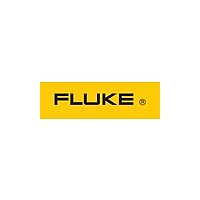TL1550EXT Fluke, TL1550EXT Datasheet - Page 12

TL1550EXT
Manufacturer Part Number
TL1550EXT
Description
TEST LEADS
Manufacturer
Fluke
Datasheet
1.TL1550EXT.pdf
(44 pages)
Specifications of TL1550EXT
Cable Length
25ft
Lead Length
25ft
Display Type
Component Test Equipment and Logic Probes
Lead Free Status / RoHS Status
na
Lead Free Status / RoHS Status
na
12
For more information and detailed specifications, turn to the corresponding non-intrinsically
safe product pages (Fluke 707, 718, 725) or go to www.fluke.com/ex
Making sense of Factory Mutual certification
Fluke 707Ex is Factory Mutual-certified N.I. Class I, Div 2, Groups A-D T4 — but what exactly does that mean? Below is a brief
explanation of the Factory Mutual designations.
Example:
NEC-500 Marking
NI
Class I
Div 1
Div 2
Groups A-D
Groups B-D
T4
Intrinsically Safe
Products
Fluke 707Ex is certified by Factory Mutual: N.I. Class I, Div, Groups A-D T4, Ta = -10 °C +50 °C
Type of protection
The Factory Mutual Approved mark
Non-incendive apparatus, internal energy is limited so a specified atmosphere cannot be ignited by its use
For use with gasses, vapors and liquids (not dust, fibers or filings)
Certified for use in Zone 1, flammable material present continuously or intermittently
Certified for use in Zone 2, explosive atmospheres not normally present, may rarely exist for short duration
Rated for use with explosive gasses as defined by groups A-D, including acetylene, hydrogen acetylene and propane
Rated for use with explosive gasses as defined by groups B-D, including acetylene, hydrogen acetylene, hydrogen and propane
Temperature class gives the user the maximum temperature of a surface that may be in contact to the Ex-atmosphere under fault
condition. T4 is rated at 135 °C
The CSA mark for Canada and the U.S. with Certificate of Compliance master contact numbers (LR 110460 for the 718Ex, 725Ex
and 221839 for the 700PEx)
ATEX and NEC-500
ATEX is the directive concerning equipment and protective systems
intended for use in potentially explosive atmospheres. Commonly called
ATEX (“Atmosphères Explosibles”), a directive (94/9/EC) whose stated goal
is to “help ensure the free movement of products in the European Union”
by minimizing the number of safeguard clause applications, at least those
originating from divergent interpretations. The ATEX rules were in place
as a voluntary standard starting March 1, 1996 and are now mandatory
on electrical and electronic equipment for use in environments subject to
explosion hazard sold in the EU.
Code, also known as the NEC, is the basis for all electrical codes in the
United States. Classifications and related product markings for hazardous
areas are covered in NEC 500 and 505.
lations are Factory Mutual (FM) and the Canadian Standards Association
(CSA).
The NFPA (National Fire Protection Association) 70, National Electrical
Two of the leading bodies that certify products as meeting these regu-










